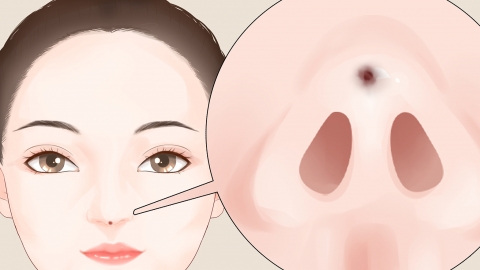How to improve a large nose tip
A large nasal tip may be caused by genetic factors, lifestyle habits, endocrine disorders, rosacea, chronic sinusitis, and other factors. Improvements can be made according to different situations. It is recommended to visit a hospital promptly and receive treatment under the guidance of a physician.

1. Genetic factors: If there are family members with large nasal tips, an individual may have a higher probability of also having a large nasal tip. A large nasal tip caused by genetic factors usually does not accompany other symptoms but rather presents as a persistent nasal feature. Makeup techniques, such as using highlights and shadows, can be used to contour the nose and make the nasal tip appear visually smaller.
2. Lifestyle habits: Long-term unhealthy lifestyle habits, such as unbalanced diet and lack of exercise, may lead to bodily edema, thereby affecting the shape of the nose and making the nasal tip appear larger. Adjusting lifestyle habits, maintaining a balanced diet, consuming more foods rich in vitamins C and E, and reducing salt and sugar intake are recommended.
3. Endocrine disorders: Hormonal imbalances and diet may lead to endocrine dysfunction, causing bodily edema and skin laxity, which can affect the shape of the nose and make it appear wider. It is recommended to take medications such as Zhenyuan Tablets, Jingxin Oral Liquid, and Motherwort Granules under a physician's guidance for improvement.
4. Rosacea: This condition may be related to skin microorganisms and neuroendocrine disorders. Long-term inflammation can lead to nasal skin tissue hyperplasia, making the nasal tip appear larger. It may also be accompanied by symptoms such as facial flushing, telangiectasia, and rashes. Patients may follow medical advice to use medications such as Acyclovir Cream, Vitamin E Cream, and Desonide Cream for improvement.
5. Chronic sinusitis: Chronic sinusitis is usually related to infections. Long-term inflammation may lead to chronic inflammation of nasal cartilage and tissues, causing changes in the shape of the nasal tip. It may be accompanied by symptoms such as nasal congestion, headache, and facial tenderness. It is recommended to follow medical advice to use medications such as Roxithromycin Tablets, Cefalexin Dry Suspension, and Clindamycin Hydrochloride Tablets to alleviate symptoms.
In daily life, maintaining good lifestyle habits and proper skincare can help improve nasal skin condition and overall appearance.






